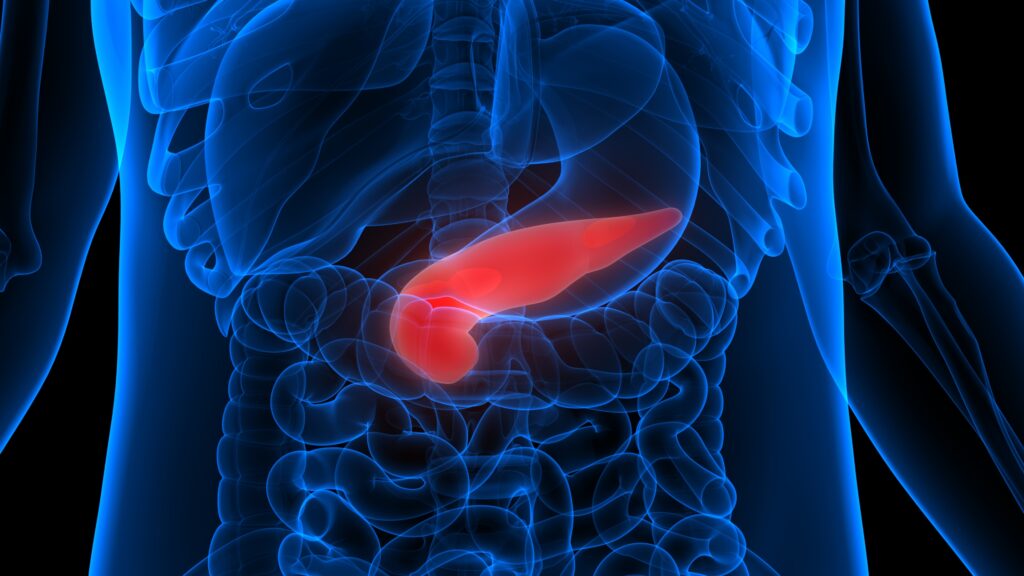Search Results
Showing Results for placenta

The prevalence of diabetes during pregnancy is rapidly increasing. In the USA alone, an estimated 1–2% of pregnant women have type 1 diabetes (T1D) or type 2 diabetes (T2D), and an additional 6–9% develop gestational diabetes.1 From 2000 to 2010, the prevalence of gestational ...

Welcome to the latest edition of touchREVIEWS in Endocrinology, which features a range of review, case report and original research articles that highlight some key developments in our understanding and management of endocrinological disease. We begin with a commentary from ...

Gestational diabetes mellitus (GDM) is generally defined as “any degree of glucose tolerance with onset or first recognition during pregnancy”.1 It currently is one of the diseases with the highest morbidity among pregnant women.2 Determining its prevalence has been a ...

Article highlights Lavender and tree tea oils have in vitro oestrogenic and antiandrogenic activity. It has been postulated that these oils may cause prepubertal gynaecomastia and premature thelarche. The association is based on a small number patients (N=12) described in ...

Long-chain fatty-acid oxidation disorders (LC-FAODs) are pan-ethnic, autosomal recessive, inherited metabolic conditions causing disruption in the processing or transportation of fats into the mitochondria to perform beta oxidation.1 In normal metabolism, long-chain fatty acids are bound to carnitine within the ...

Gestational diabetes mellitus (GDM), defined as hyperglycaemia identified after the first trimester of pregnancy that is not clearly overt diabetes, impacts approximately 7% of births in the USA; a percentage that has increased in parallel with the prevalence of both obesity ...

Acromegaly is a chronic disorder characterised by growth hormone (GH) hypersecretion, predominantly caused by a pituitary adenoma.1 Disease prevalence ranges from 2.8–13.7 cases and annual incidence is between 0.2–1.1 cases/100,000 people; however, real incidence is likely much higher.2,3 Average age at diagnosis ...

Monocarboxylate transporter 8 is an important thyroid hormone transporter Thyroid hormone (TH) is essential for the normal growth and development of many tissues, particularly the brain. TH is the common name for the prohormone thyroxine (3,3’,5,5’-tetraiodo-L-thyronine, T4), which is the predominant ...

The human foetus is capable of producing thyroid hormones at around 20 weeks of gestation. Even in the rare event that there happens to be a defect in thyroid organogenesis or an inborn error in thyroid hormone synthesis, the developing foetal ...

Ghrelin is a 28-amino-acid peptide predominantly secreted in the stomach and stimulates appetite and growth hormone (GH) release. The name ghrelin is based on ‘ghre’ a word root in Proto-Indo-European languages meaning ‘grow’ in reference to its ability to stimulate ...

Diabetes in Pregnancy It has been estimated that type 1 (T1D) and type 2 (T2D) diabetes mellitus (DM) affect at least 1 % of pregnancies.1 Gestational diabetes, which is characterised by glucose intolerance of variable severity that begins or is first diagnosed ...

Background and Literature Review Background and Literature Review Obesity in pregnancy carries risks. Raja et al.16 carried out a review of deliveries between January 2002 and December 2007. Obese mothers (body mass index [BMI] ≥30) were shown to be at significantly higher risk ...

Background and Literature Review Background and Literature Review Obesity in pregnancy carries risks. Raja et al.16 carried out a review of deliveries between January 2002 and December 2007. Obese mothers (body mass index [BMI] ≥30) were shown to be at significantly higher risk ...

Acromegaly in pregnant women is an uncommon clinical problem. However, today, due to earlier diagnosis, women present with this concern at a younger age. In patients with pre-existing acromegaly, there may be difficulty conceiving, there are concerns regarding maternal and ...

Diabetic retinopathy is considered the most frequent retinal vascular disorder and is detectable in about 40 % of diabetic patients 40 years of age and older.1 Today, diabetic retinopathy is the leading cause of acquired blindness among young adults throughout developed countries.2 Population-based ...

Prolactin Prolactin is a polypeptide hormone produced and secreted by the adenohypophysis. This hormone is in the family with growth hormone and human placental lactogen; in fact, they are sufficiently homologous to suggest a common ancestral gene. Prolactin Prolactin is ...

Prolactin Prolactin is a polypeptide hormone produced and secreted by the adenohypophysis. This hormone is in the family with growth hormone and human placental lactogen; in fact, they are sufficiently homologous to suggest a common ancestral gene. Prolactin Prolactin is ...

High glucose levels during pregnancy increase the chance that a baby will be born with birth defects. High glucose levels have the most significant effect early in pregnancy, possibly before a woman knows she is pregnant. Therefore, if a woman ...
Latest articles videos and clinical updates - straight to your inbox
Log into your Touch Account
Earn and track your CME credits on the go, save articles for later, and follow the latest congress coverage.
Register now for FREE Access
Register for free to hear about the latest expert-led education, peer-reviewed articles, conference highlights, and innovative CME activities.
Sign up with an Email
Or use a Social Account.
This Functionality is for
Members Only
Explore the latest in medical education and stay current in your field. Create a free account to track your learning.

